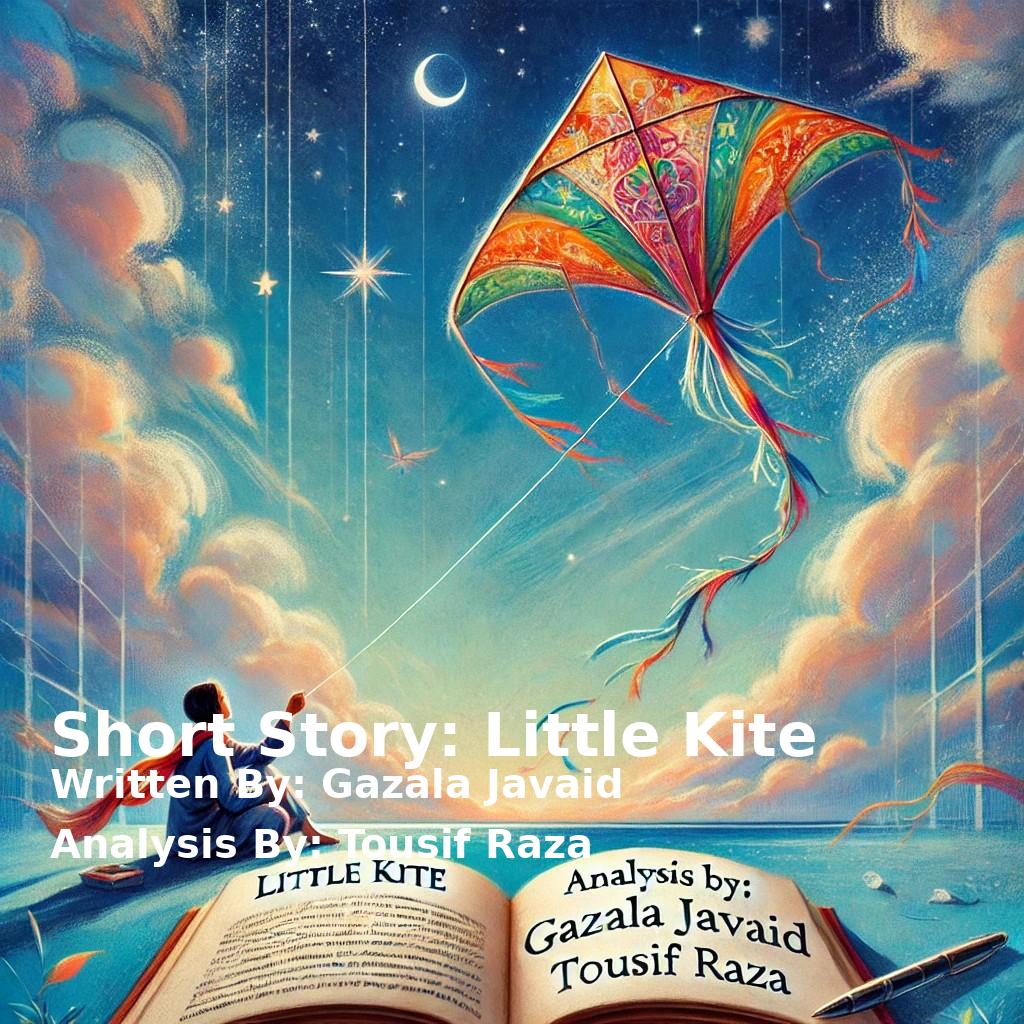Tousif Raza
Short stories are a remarkable medium of storytelling, offering profound insights into human life and emotions in a compact form. They often distill universal truths into relatable narratives, inviting readers to reflect on their journeys. Among such inspiring tales is The Flight of Courage: Lessons from the Little Kite, written by Gazala Javaid. This story of two kites—a hesitant little kite and an inspiring big kite—captures the essence of courage, mentorship, and self-belief. Through its beautifully woven narrative, Javaid touches on themes of fear, persistence, and the transformative power of encouragement, making it a parable that resonates across social, philosophical, and personal dimensions.
The Story at a Glance
The narrative revolves around a little kite who, bound by self-doubt and fear, feels incapable of flying. Discouraged by other kites and paralyzed by the fear of failure, she believes she is destined to remain grounded. Enter the big kite—a symbol of wisdom and mentorship—who reassures the little kite that flying is her innate nature and encourages her to try, even if it means trembling on her first attempt. With the big kite’s support, the little kite musters courage and takes flight. Through persistence and resilience, she overcomes her fears and soars high, side by side with the big kite. Her transformation becomes a beacon of hope, inspiring others to rise above their limitations.
The Social Dimension of the Story
Gazala Javaid’s story reflects societal dynamics where individuals are often judged and underestimated. The little kite represents those who face criticism or lack self-confidence, while the big kite symbolizes mentors and supportive figures who inspire others to achieve their potential. The tale serves as a reminder that a nurturing environment and encouraging words can empower individuals to break free from the chains of self-doubt and societal expectations. It emphasizes the importance of uplifting one another to foster collective progress.
The Philosophical Perspective
Philosophically, the story delves into the universal struggle between fear and self-realization. The little kite’s journey is an allegory for human existence, where courage becomes the bridge between doubt and achievement. Gazala beautifully captures the idea that life’s purpose is found in action and resilience. The little kite’s eventual flight reflects the existential belief that individuals must embrace their essence and confront their fears to find fulfillment.
The Psychological Journey & symbolism
The little kite’s transformation is a metaphor for overcoming psychological barriers. Fear of failure and self-perceived inadequacies are common hurdles in life. The big kite’s encouragement demonstrates the power of positive reinforcement and mentorship in reshaping one’s mindset. The writer emphasizes the value of resilience and a growth mindset. The little kite’s story teaches that failure is not the end but a stepping stone toward success. The ability to rise again after falling is a testament to inner strength and determination. The kites in Gazala’s story symbolize human aspirations, dreams, and potential. The string represents the challenges and connections that anchor us, while the wind symbolizes external forces—both favorable and opposing. The interplay of these elements underscores the delicate balance required to achieve success.
Lessons in the story
The story of the little kite imparts profound lessons about life and personal growth, emphasizing the transformative power of courage, mentorship, resilience, and self-belief. It teaches us that courage is not the absence of fear but the determination to act despite it, enabling us to confront challenges and rise above limitations. The role of a supportive mentor, symbolized by the big kite, is pivotal in unlocking hidden potential, offering guidance, and inspiring confidence to overcome doubts and fears.
Failures, often seen as roadblocks, are redefined in this narrative as valuable opportunities for growth. They serve as teachers, helping us learn from our mistakes, build resilience, and strengthen our resolve to persevere. Finally, the story underscores the significance of self-belief and persistence. Believing in oneself is the first step toward achieving any goal, and persistence ensures that even in the face of setbacks, we keep striving until success is within reach. Together, these lessons remind us that the journey to greatness begins with courage, is supported by mentorship, and is sustained by resilience and unwavering self-confidence.
A Universal Allegory
Gazala Javaid’s The Flight of Courage: Lessons from the Little Kite transcends its narrative to offer timeless wisdom. It speaks to anyone who has ever felt inadequate, feared failure or hesitated to chase a dream. Through the little kite’s journey, Javaid illustrates that courage, persistence, and the right guidance can help us overcome even the most daunting challenges. This story is a testament to the power of short stories as a literary form—condensed yet deeply impactful, reminding us that the ability to rise lies within us all. Let’s conclude with a sentence that “Storytelling is a profound art and Gazala knows it very well”
(The author is an English literature student and hails from Tangmarg and can be reached at tousifeqbal555@gmail.com)
